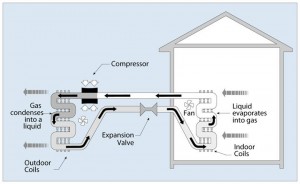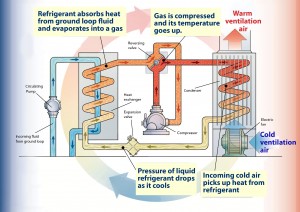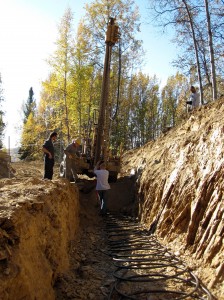Air source heat pumps (ASHP) are a heating appliance that act like a refrigerator in reverse. Where a refrigerator removes heated air from its interior and transfers it to the room, an air source heat pump extracts heat from outside a house, and transfers it to a home’s interior. Using an ASHP in colder climates seems counterintuitive, but the truth is that “cold” outdoor air still contains heat, and an ASHP uses electricity to “step up” that heat to a temperature useful for space heating. Until recently, ASHPs have been used in areas that only experienced mild winters. However, ongoing advances in technology have resulted in ASHPs that can be installed in colder climates.
Southeast Alaska is a promising candidate for ASHP heating appliances, because it has a milder climate than the rest of the state and access to affordable hydroelectric power. Because ASHPs take some heat from the outdoor air and require less electricity than electric baseboards, they have the potential to reduce heating costs for homeowners who previously heated with electric appliances.
However, there is still uncertainty about the performance of ASHPs in cold climates, and about the barriers to their adoption in Alaska. CCHRC is planning to explore the opportunity of using ASHPs in Southeast Alaska in a new project: Southeast Alaska ASHP Technology Assessment. We will conduct a literature review, interview installers, distributers, and ASHP owners, create an inventory of existing ASHPs in Alaska, and model their economic and heating impact. If you are interested, look for the Technology Assessment on our website in early 2013!
Read CCHRC’s Ground Source Heat Pump assessment here.


